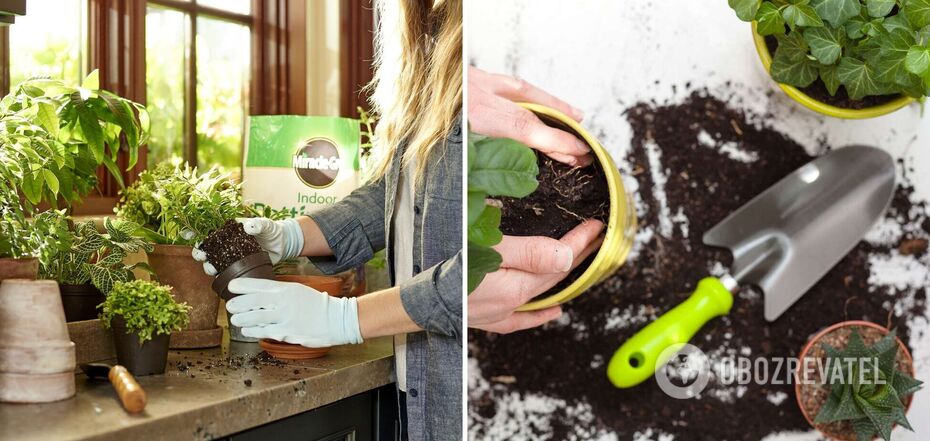Entertainment
When you shouldn't transplant indoor flowers: how to do it right
Indoor plants need to be repotted regularly. There are several reasons for this: depletion of the soil in the pot, the need to "relocate" to a larger pot, the fight against root diseases, etc. If necessary, you can transplant plants at any time - it's better to miss the season than to lose your green pet. But there are general rules for when it is better to transplant indoor plants.
OBOZREVATEL talks about the nuances of this process. Here are the key rules for when not to transplant plants.
During the flowering period
At this time, the plant is at the peak of its form and devotes all its efforts to maintaining the flowers. If you shake it out of the pot, deprive it of its usual soil on the roots, and move it, it will go into shock and may drop its flowers. You will have to wait a year for the next bloom.
During the dormant period
Transplanting during the dormant period will also not benefit the flowerpot. For most species, these are the autumn and winter months. But for poinsettia, for example, it is spring. So pay attention - if your plant has stopped growing, leave it in the old pot, let it rest.
When the plant has become too big
If your flowerpot has become so large that you find it difficult to lift it, it is better not to transplant it yourself. You can either injure yourself or break the plant. Wait for help or refresh the flowerpot by removing the top layer of soil and adding fresh soil.
When the plant is sick
There are diseases that require replanting, such as mould in the soil or some root diseases. But these are not very common cases. As a rule, in order not to expose an already weakened flowerpot to additional shock, you first need to treat it - destroy the pests, treat it with appropriate drugs, and then transplant it.
If you don't want the plant to grow
Constantly "relocating" a plant to a larger flowerpot will certainly please your green pet, but it will take away your living space. Therefore, if your flowerpot has reached the maximum desired size, simply refresh the soil in its pot from time to time - this way you will not put it under excessive stress and keep it in good condition.
Immediately after purchase
The plant you just brought home needs time to adapt and quarantine. In this case, it's best to keep it separated from the rest of the greenery for 2-3 weeks and observe whether you accidentally brought any pests with you. During this time, the flowerpot will acclimatise to your home.
What is important to remember when transplanting
Whatever time you choose for transplanting, remember a few basic rules:
- The plant will go through a shock period after transplanting in any case, so if it looks bad after moving to a new pot, do not rush to treat it or radically change its care. Just watch it for a while.
- Don't forget about drainage, it will allow the roots to breathe and protect them from waterlogging, which can be fatal in the period after transplantation.
- Disinfect the pot before transplanting the plant into it - the best way is to pour boiling water over it or hold it over water vapour. There is no need to treat the container with alcohol or other aggressive chemicals. Even in small quantities, they will definitely not benefit the plant.
Earlier, OBOZREVATEL described in detail how to properly water indoor plants.
Subscribe to OBOZREVATEL's Telegram and Viber channels to keep up with the latest news.



























